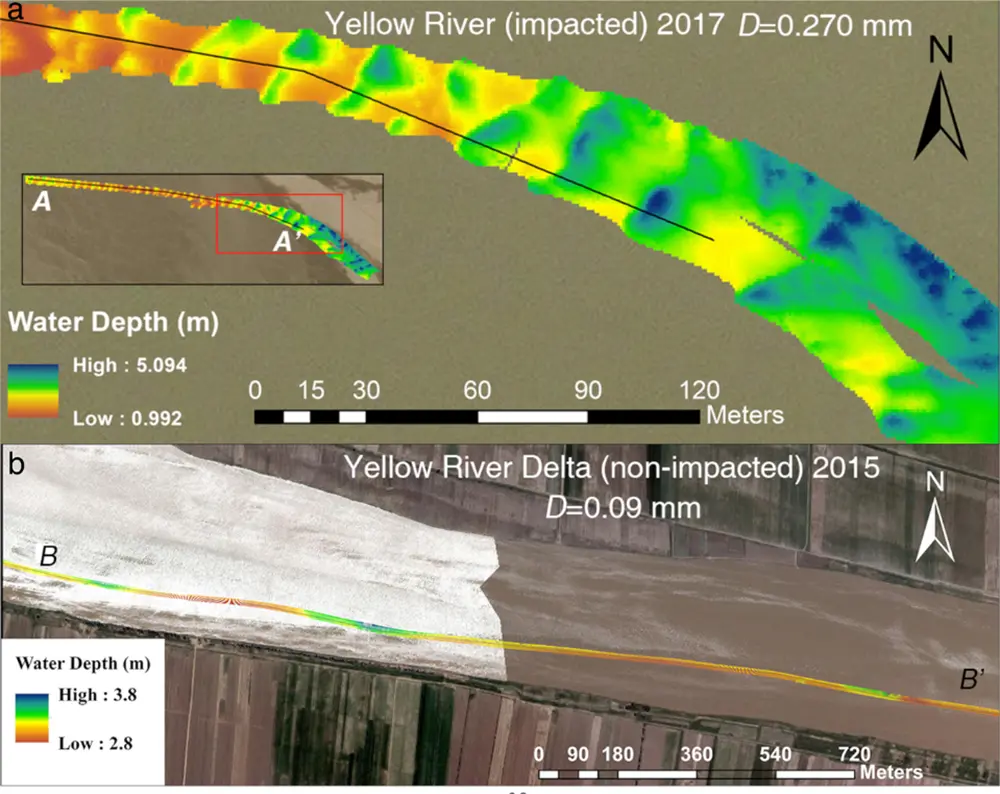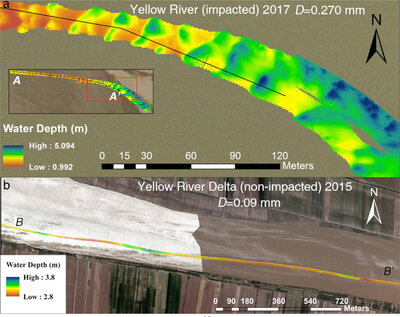
In a new paper published in Nature Communications, Gary Parker, Jim Best and Julia Cisneros (former PhD student) are part of a team that reports on how damming on the Huang He (Yellow) River, China, may increase the risk of flooding from moderate to large floods.
The study, led by Hongbo Ma (UC Irvine) and Jeff Nittrouer (Texas Tech; former postdoc at Illinois) involved researchers from eight institutions, quantified the shape of the bed of the Huang He River using a range of acoustic surveying techniques, and especially changes downstream of the giant Xiaolangdi Dam. The field study and analysis of flow records found that, although flood levels may be lowered downstream of the dam for small floods due to incision of the river bed, counterintuitively, flood levels can be amplified for moderate and large floods. This arises because bed incision is accompanied by a coarsening of the bed sediment, which causes the development of large sand dunes that increase flow resistance and reduce flow velocity relative to pre-dam conditions. These findings indicate this underlying mechanism of flood amplification may occur in >80% of fine-grained rivers, suggesting the need to rethink flood control strategies in such rivers worldwide.
Link to paper: https://www.nature.com/articles/s41467-022-30730-9
